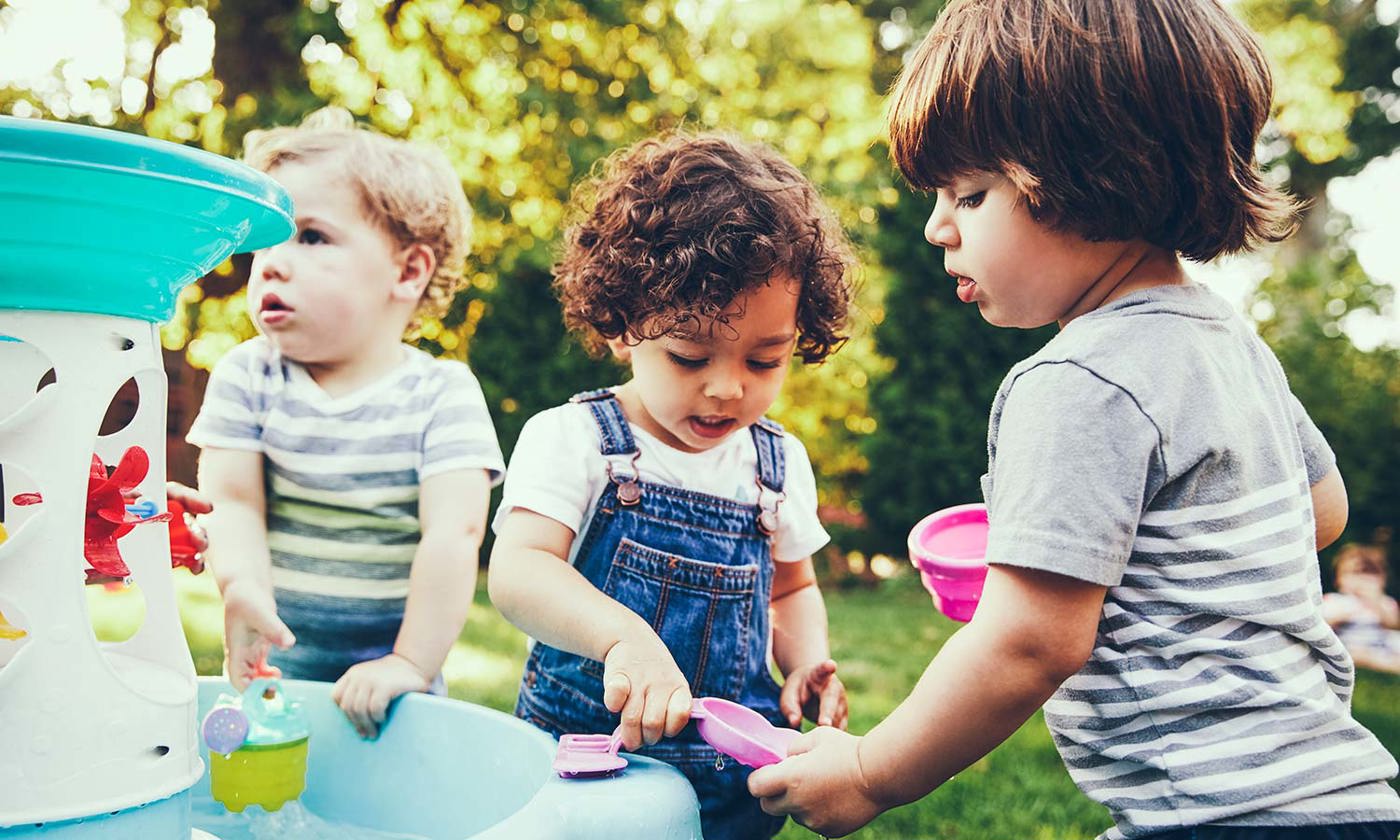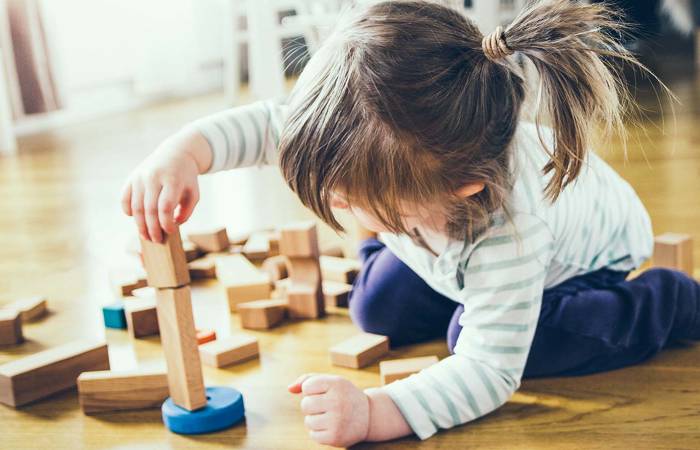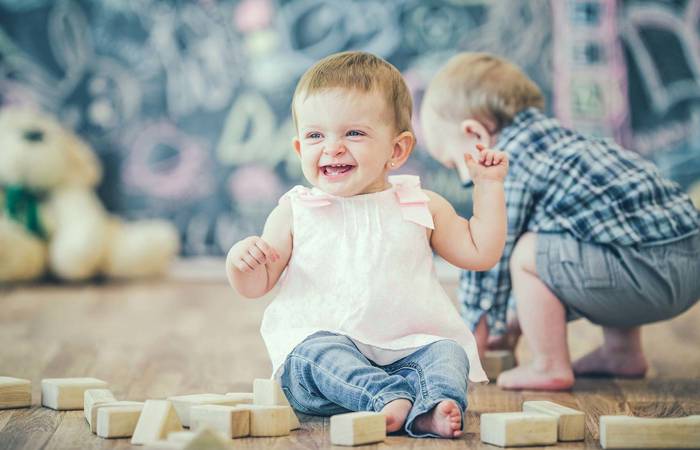Like what you see?
Sign up to receive more free parenting advice.
Thank you for subscribing to our newsletter!
Early Learning

Credit: iStock.com/monkeybusinessimages
When buying gifts for children we not only think about something a child would enjoy but what is right for their developmental stage. But how do we determine the latter? And how can parents make gift-giving choices that will make play and the toys we are giving have that extra bit of impact behind the scenes?
How thinking like an OT can help parents
Occupational Therapist Casey Winton says the goals of parents and occupational therapists overlap.
“As a parent, you want your children to be confident, feel loved and to do well. Occupational therapists work on those things. We build a relationship with the child, help build their confidence by working on their independence and self care skills, and help get them ready for school,” says Casey, the National Manager for Occupational Therapy at Goodstart Early Learning.
Like all occupational therapists, Casey is expert at breaking down child development into small but important stages.
“We break down tasks and activities to make sure children are developing as expected and reaching the developmental milestones consistent with their age,” she says.
Still, the real experts on children are their parents, which means most strategies suggested in occupational therapy need to work in the family home.
“We are a guide with specialist knowledge, but parents are the expert on their own child, so we show everyone how to do an activity, step by step, and then they try it at home and let us know how this has worked,” Casey says.
As the job title indicates, occupational therapists help people get better at their occupation. And given that the main ‘occupation’ of children is play, Casey says toys, gifts and simply playing with their parents all offer endless possibilities to help children reach their developmental potential.
As a parent, you want your children to be confidant, to be loved and to do well. Occupational therapists work on those things. We build a relationship with the child, help build their confidence by working on their independence and self care skills, and help get them ready for school.Casey Winton
Stay up to date with the latest news and articles from First Five Years
Thank you for subscribing to our newsletter!
Great gifts that support your child’s development
Many of the toys parents traditionally turn to, to help get children outside and moving, and are also excellent for aspects of their development.
“Good options include tricycles or balance bikes, mini trampolines or soccer balls: all would be good for physical gross motor skills,” says Casey.
Fine motor skills can be supported by drawing, but remember, you don’t need to be limited by paper.
“Yes, they might be making marks on a page but they could also do this using their fingers in Play-Doh. Of course, you don’t need to spend money to draw with a stick in the dirt or sand, or on the fog in the shower screen at bath time,” Casey notes, in a reminder that some of the best developmental opportunities are free.
Another skill children need to develop is sensory processing. Sensory processing skills reflect our capacity to take in and process information from the outside world.
“As adults we can do this for ourselves. We know when we are hot and bothered, when we need to stand up and stretch, or when music is too loud. Little children are just learning to regulate their senses themselves, so they need some co-regulation from adults to be able to focus and learn,” Casey says.
Parents can help by looking at their child’s sensory preferences and starting with setting up activities that will work to their strengths.
“Lots of children like touching slime as they enjoy that sensory touch. Other children might prefer sounds, so you could set up some music or another noisy activity with musical instruments,” Casey says.
Then, gradually, we can help our children integrate all the senses, including the ones they don’t prefer. This helps them to cope better when they come across these experiences outside the home.
“For example, if a child doesn’t like water – which makes things like bath time, the pool and the beach difficult – you might start with some water play, but they just watch you playing with the water,” says Casey.
Then, you could soak a flannel and let them touch it, then, squeeze it to drip over them.
“Finally, you let them approach the water table themselves, but have something there to dry themselves on straight away. It’s a slow, step by step process where you back off and start again if they really don’t like it,” says Casey.
Playing together these holidays
As most parents visiting an occupational therapist quickly learn, parents have a vital role in helping their children by playing with them at home.
“Play is not always about getting children to a next step developmentally, although of course that’s important so they are ready for school. But an important part of parents engaging with their children through play is simply about building a relationship: you each learn about the other through play,” Casey says.
In the holiday season baking is an excellent and enjoyable sensory activity parents can do with their young children.
“They could knead biscuit dough with their hands, use a wooden spoon to mix batter, or ice the biscuits in different colours when they are cooked,” Casey suggests.
Christmas craft is another.
“That helps you work on fine motor skills like cutting and drawing,” Casey says.
Sensory gifts occupational therapists love
Water tables: good for water, shaving cream, sand, jelly or slime. “You can fill them with lots of different textures, or put gemstones that sink or dinosaurs into it, so they have to have a treasure hunt,” says Casey.
Bath chalk: “It looks like a texta, but you can draw on bath tiles with it and wash it off,” says Casey.
Lego or Play-Doh: Both good for fine motor skills.
Scented textas: Good for sensory skills (smell).
Water beads: “These are little jelly balls about the size of a peanut. They come in different colours and you fill a bowl with them. They are slimy and kids love to play with them,” says Casey.







